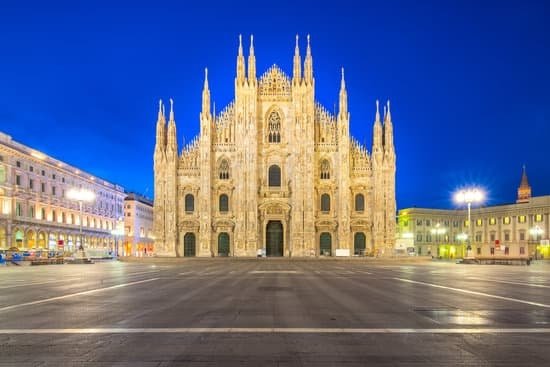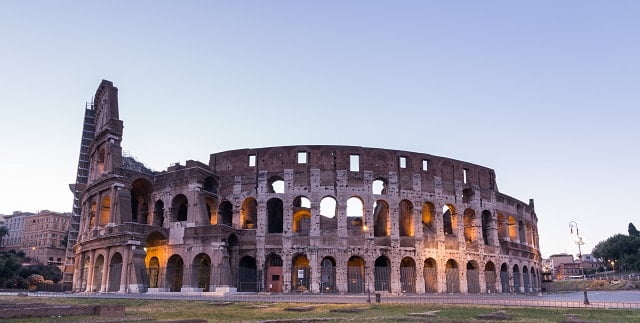Rome, the Eternal City, is a destination that captures the hearts of visitors with its rich history, stunning architecture, and vibrant culture. Whether you are a first-time traveler or a seasoned explorer, navigating through Rome’s bustling streets and iconic landmarks can be an adventure in itself. In this article, we will delve into how to travel around Rome Italy, providing you with essential tips and insights to make the most of your time in this enchanting city.
From the ancient ruins of the Colosseum to the grandeur of Vatican City, Rome is a treasure trove of historical marvels waiting to be discovered. As you wander through cobblestone streets and picturesque piazzas, you will find yourself immersed in a world where past and present collide in a harmonious blend. The key to truly experiencing all that Rome has to offer lies in exploring the city through various modes of transportation, each offering its unique charm and convenience.
Whether you choose to meander through Rome on foot, hop on a metro train, or rent a car for your travels, there is no shortage of ways to navigate this bustling metropolis. Each mode of transportation presents its advantages and allows you to uncover hidden gems tucked away in different corners of the city. So buckle up as we embark on a journey through the winding streets and cultural wonders of Rome.
Getting Around Rome
One of the best ways to explore Rome, Italy is by familiarizing yourself with the various modes of transportation available in the city. Whether you prefer the convenience of public transportation, the freedom of walking, or the flexibility of renting a car, Rome has options to suit every traveler’s preference. Understanding how to travel around Rome is key to maximizing your time in this historic city.
The most popular mode of transportation in Rome is its extensive public transportation system, which includes buses, trams, and a metro system. The Metro is particularly useful for traveling longer distances quickly, while buses and trams can take you to more specific locations throughout the city. To use public transportation efficiently, consider purchasing a Roma Pass which provides access to unlimited public transport for a set period.
For those who enjoy exploring at their own pace and taking in the sights on foot, Rome offers numerous walking tours and routes that showcase its iconic landmarks. Strolling through neighborhoods like Trastevere or along cobblestone streets near the Colosseum can provide a deeper insight into Roman culture and history. Maps are readily available at tourist information centers or online to help guide your exploration on foot.
| Mode of Transportation | Pros | Cons |
|---|---|---|
| Public Transportation | Convenient and cost-effective | Can be crowded during peak hours |
| Walking Tours | Allows for a closer look at attractions | May require significant walking |
| Renting a Car | Flexibility to explore beyond Rome | Traffic congestion and limited parking availability |
By considering these different modes of transportation when planning your visit to Rome, you can tailor your experience to match your preferences and make the most out of your time in this vibrant city. Whether you choose public transportation for convenience, walking tours for a more immersive experience, or renting a car for added flexibility, navigating Rome’s streets will undoubtedly be an adventure worth remembering.
Exploring Rome on Foot
When it comes to immersing yourself in the rich history and culture of Rome, one of the best ways to do so is by exploring the city on foot. Rome is a treasure trove of ancient ruins, charming piazzas, and hidden gems waiting to be discovered around every corner.
There are countless walking tours available that cater to a variety of interests, whether you are fascinated by the Roman Empire, intrigued by Renaissance art, or simply want to sample authentic Italian cuisine.
One popular walking tour option is the Historic Center Walk that takes you through iconic landmarks such as the Pantheon, Trevi Fountain, and Piazza Navona. This route offers a glimpse into Rome’s ancient past while allowing you to soak in the vibrant atmosphere of modern-day Rome. For those interested in delving deeper into art and history, guided tours of the Vatican Museums, Sistine Chapel, and St. Peter’s Basilica provide an enriching experience led by knowledgeable guides.
Another fantastic way to explore Rome on foot is by strolling through its picturesque neighborhoods like Trastevere or Monti. These quaint districts offer a more intimate look at Roman daily life with their cobblestone streets, colorful buildings, and cozy cafes. Don’t forget to wander through Campo de’ Fiori market for a taste of local flavors – from fresh produce to artisanal goods.
Considering all these options for exploring Rome on foot begs the question: how to travel around Rome Italy efficiently? While walking is ideal for discovering the city’s charm up close, it’s also important to familiarize yourself with public transportation options for longer distances or when tired feet need a break. Let’s now delve into details about using public transportation in Rome to make your exploration seamless and enjoyable.
| Walking Tour | Description |
|---|---|
| Historic Center Walk | Guided tour through iconic landmarks such as Pantheon and Trevi Fountain. |
| Vatican Museums Tour | Explore famous museums like Sistine Chapel with knowledgeable guides. |
| Neighborhood Stroll | Take a leisurely walk through charming districts like Trastevere or Monti. |
Using Public Transportation in Rome
When exploring Rome, using public transportation can be a convenient and cost-effective way to get around the city. The public transportation system in Rome consists of metro, buses, and trams, providing easy access to all the major attractions and neighborhoods. Here are some tips on how to navigate these modes of transportation efficiently:
- Metro: The metro system in Rome is comprised of three lines – A (orange), B (blue), and C (green). It is a quick and efficient way to travel between different parts of the city. Be sure to purchase a metro ticket from the vending machines at the stations before boarding.
- Buses: Rome has an extensive bus network that covers virtually every corner of the city. Bus routes are clearly indicated at bus stops, but it is advisable to download a map or use a mobile app for real-time information on bus schedules and routes.
- Trams: Trams are another popular mode of transport in Rome, especially for reaching areas not easily accessible by metro or buses. Like buses, tram routes are posted at stops, so you can plan your journey accordingly.
Using public transportation in Rome allows visitors to experience the city like a local, immersing themselves in everyday life while also saving money on expensive taxi fares. By familiarizing yourself with the metro lines, bus routes, and tram stops, you can easily navigate Rome’s bustling streets and vibrant neighborhoods. So next time you visit Rome, consider utilizing the city’s public transportation system for a hassle-free sightseeing experience.
Additionally, purchasing a Roma Pass can be a practical option for those planning to use public transportation frequently during their stay in Rome. This pass allows unlimited access to public transport for 72 hours and provides free entry to two top attractions in the city.
Not only does it streamline your travel around Rome, but it also offers additional discounts on various museums, art galleries, and exhibitions. Make sure to validate your Roma Pass before using it on any mode of public transport to avoid any fines or penalties.
Renting a Car in Rome
When it comes to exploring a city like Rome, there are various modes of transportation to choose from. One option that some travelers consider is renting a car. Renting a car in Rome can have its pros and cons, depending on your travel preferences and itinerary. Here are some factors to consider when deciding whether or not to rent a car in Rome:
Pros of renting a car in Rome:
- Freedom and Flexibility: Renting a car gives you the freedom to explore Rome at your own pace. You can visit off-the-beaten-path locations and make spontaneous stops along the way.
- Convenience: Having a car allows you to easily travel outside of the city center and explore nearby attractions such as Tivoli, Ostia Antica, or the picturesque countryside.
- Comfort: Renting a car can provide more comfort, especially if you are traveling with children or have mobility issues. You can avoid crowded public transportation and carry your luggage with ease.
Cons of renting a car in Rome:
- Traffic and Parking: Rome is known for its chaotic traffic and limited parking spaces. Navigating through busy streets and finding parking can be stressful and time-consuming.
- ZTL Zones: Rome has restricted traffic zones (ZTL) in the city center where only residents are allowed to drive. If you enter these zones without authorization, you may face hefty fines.
- Cost: Renting a car in Rome can be expensive, especially when factoring in rental fees, gas prices, tolls on highways, parking fees, and potential fines for traffic violations.
Before deciding whether to rent a car in Rome, consider your itinerary, comfort level with driving abroad, and budget constraints. Whether you choose to explore Rome by foot, public transportation, or rental car, the most important thing is to enjoy your experience in this beautiful city filled with history, culture, and delicious cuisine.
Arriving in Rome
From Fiumicino Airport to Rome City Center
Fiumicino Airport, also known as Leonardo da Vinci International Airport, is the main airport serving Rome. To travel from Fiumicino to the city center, there are several options available. The Leonardo Express train is a convenient and quick way to reach Termini Station, the main railway station in Rome. Taxis are also available outside the airport but can be more expensive than taking public transportation.
From Ciampino Airport to Rome City Center
If you’re arriving at Ciampino Airport, which is another popular airport in Rome, you’ll find buses that connect the airport to Termini Station. The journey takes around 40 minutes, depending on traffic conditions. Alternatively, you can opt for a taxi or private transfer for a more direct route to your accommodation in Rome.
Navigating Train Stations in Rome
Rome has several train stations that connect not only different parts of Italy but also various European cities. When navigating train stations like Termini or Tiburtina, it’s important to keep an eye on your belongings and be mindful of pickpockets. Make sure to validate your ticket before boarding trains and pay attention to departure boards for any schedule changes. familiarizing yourself with these facilities will save you time and stress during your visit to Rome.
Day Trips From Rome
When visiting Rome, it’s essential to explore the must-see destinations nearby on a day trip. While Rome itself is filled with history, art, and culture, the surrounding areas offer even more gems waiting to be discovered. From ancient ruins to picturesque towns, there is something for everyone just a short distance away from the Eternal City.
Pompeii and Mount Vesuvius
One of the most popular day trips from Rome is to Pompeii and Mount Vesuvius. Located near Naples, Pompeii is an ancient Roman city that was buried under ash and pumice after the eruption of Mount Vesuvius in 79 AD. Walking through the well-preserved ruins offers a glimpse into daily life during Roman times. After exploring Pompeii, visitors can hike up Mount Vesuvius for stunning views of the Bay of Naples.
Tivoli
Another fantastic day trip from Rome is to Tivoli, a charming town known for its beautiful villas and gardens. Two main attractions in Tivoli are Villa d’Este and Villa Adriana (Hadrian’s Villa). Villa d’Este features magnificent gardens with fountains, while Hadrian’s Villa showcases the grandeur of a Roman emperor’s residence. Visitors can wander through these UNESCO World Heritage sites and marvel at their beauty and history.
Ostia Antica
For those interested in archaeology and Roman history, a day trip to Ostia Antica is a must. Located just outside of Rome, Ostia Antica was once a bustling port city that served as a vital hub for trade in ancient times. The well-preserved ruins include an amphitheater, baths, mosaics, and temples. Walking through this archaeological site provides insight into daily life in a Roman port city and offers a peaceful break from the hustle and bustle of Rome.
These are just a few examples of the incredible day trips you can take from Rome to explore more of Italy’s rich history and culture. Whether you’re interested in ancient ruins, picturesque gardens, or charming towns, there is something for everyone within easy reach of Rome. Plan your itinerary carefully to make the most of your time exploring these nearby destinations while experiencing all that Rome has to offer.
Top Travel Tips for Rome
When planning a trip to Rome, it is important to consider some key travel tips that will make your experience more enjoyable and stress-free. Knowing what to pack, where to stay, and understanding common etiquette in Italy can help you navigate the city with ease and immerse yourself in the local culture.
Packing for Rome requires some careful consideration, as the weather can vary throughout the year. In general, lightweight clothing is recommended for the warmer months, while layers are essential for cooler temperatures. Comfortable shoes are a must, especially if you plan on exploring the city on foot. Additionally, it is advisable to pack a scarf or shawl to cover your shoulders when visiting churches or religious sites.
Choosing the right accommodation in Rome can greatly enhance your overall experience. From luxury hotels to budget-friendly hostels and charming boutique guesthouses, there are options available for every type of traveler. Consider staying near popular attractions such as the Colosseum or the Vatican City to easily access major sights. Alternatively, staying in a quieter neighborhood can provide a more authentic experience away from the tourist crowds.
Understanding common etiquette in Italy is essential for having a positive interaction with locals. It is customary to greet people with a handshake and maintain eye contact during conversations. When dining out, it is polite to wait for everyone at the table before starting your meal.
Additionally, be sure to dress modestly when visiting churches and religious sites out of respect for local customs. By embracing these cultural norms and being mindful of your surroundings, you can fully enjoy all that Rome has to offer during your visit.
Conclusion
Rome, the Eternal City, truly captivates visitors with its rich history, stunning architecture, and vibrant culture. Navigating this bustling metropolis may seem daunting at first, but with the right information and preparation, exploring Rome becomes a delightful adventure. From the iconic landmarks like the Colosseum and Vatican City to the charming cobblestone streets of Trastevere, there is so much to see and experience in Rome.
When it comes to getting around Rome, visitors have a variety of transportation options at their disposal. Whether you prefer walking tours through ancient ruins, hopping on a bus to reach different neighborhoods, or taking the metro for longer distances, there is a mode of transportation that suits every traveler’s preferences.
Understanding how to travel around Rome Italy efficiently can enhance your overall experience in the city and allow you to make the most of your time exploring its treasures.
As you plan your next adventure in Rome, remember to pack comfortably for long walks and unpredictable weather. Consider staying in centrally located accommodations to easily access popular attractions. Embrace Italian customs and etiquette by greeting locals with a friendly “buongiorno” and savoring traditional Roman cuisine like pasta carbonara and gelato.
With these tips in mind, you’ll be well-equipped to immerse yourself fully in the charm of Rome and create unforgettable memories during your visit to this enchanting city. Buon viaggio.
Frequently Asked Questions
How Do Tourists Get Around Rome?
Tourists in Rome have several options for getting around the city. The most popular mode of transportation is the extensive public transportation system, including buses, trams, and the metro. Many tourists also choose to explore Rome on foot, taking advantage of the city’s compact size and pedestrian-friendly streets.
What Is the Best Way to Explore Rome?
The best way to explore Rome is by walking through its historic streets and alleys. This allows visitors to truly immerse themselves in the city’s rich history and culture, discovering hidden gems along the way. Additionally, joining a guided tour or hiring a local guide can provide valuable insights into Rome’s landmarks and attractions.
Is Uber Expensive in Rome?
Uber is available in Rome and can be a convenient option for tourists looking for on-demand transportation. While Uber may be more expensive than traditional taxis or public transportation, it offers convenience and ease of use for those who prefer ride-sharing services.
It’s important to note that Uber prices may vary depending on demand and time of day in Rome.

I’m a passionate traveler, writer, and Italophile. My fascination with Italy’s history, art, and culture has led me on countless adventures across the Italian landscape. Through “I Live Italy,” I share my love for this extraordinary country and aims to inspire others to explore its boundless beauty.





